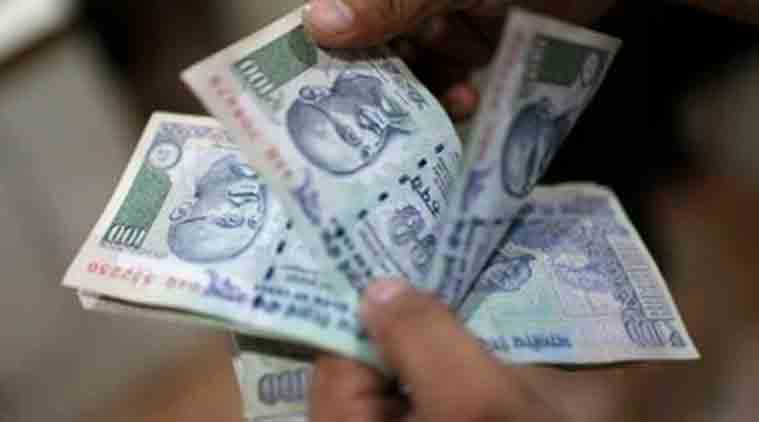
AN INCREASED reliance on the National Small Savings Fund (NSSF) and issue of recapitalisation bonds has helped the government to improve its fiscal affairs but its headline deficit number does not fully reflect the underlying pressures from a delayed fiscal consolidation plan.
The Centre is on course to raise Rs 2.35 lakh crore through these two means: an estimated Rs 1.25 lakh crore from the NSSF and Rs 1,10,500 crore via recapitalisation bonds. The NSSF share in financing of fiscal deficit is projected to rise to 18.5 per cent in 2019-20, up from 12 per cent in 2018-19, according to last week’s Budget documents.
The NSSF collects funds through small savings schemes, such as Post Office Savings Account, National Savings Time Deposits, National Savings Recurring Deposits, National Savings Monthly Income Scheme. It is a costlier form of borrowing for the government as compared to market loans.
The reliance on the NSSF enabled the government to reduce its market borrowings. And, the funds raised by way of recapitalisation bonds, mainly to boost public sector banks and EXIM Bank, helped it finance record equity infusion in state-owned banks without jeopardising the overall fiscal math. On the books, the government needs to account for only the interest payments on recapitalisation bonds.
A mini stimulus ahead of polls
However, it has missed its deficit reduction target for the second year in a row, with projections at 3.4 per cent of Gross Domestic Product by March-end 2019 in the Revised Estimates (RE) — marginally higher than 3.3 per cent it had planned earlier.
It has also abandoned the deficit reduction plan for the next year ending March 2020. As per the Interim Budget 2019-20, the government now aims to achieve fiscal deficit target of 3.4 per cent of GDP for the next year, much higher than the previously presented glide path of containing it at 3.1 per cent of GDP.
During the current year, the government increased its reliance on NSSF by Rs 50,000 crore and on recapitalisation bonds by Rs 45,500 crore. And as state-owned banks were unable to raise planned amount of funds from the market, the government stepped up equity support through the recap bonds route. This method was again used to recapitalise Exim Bank, which has been battling high NPAs and net losses. In 2017-18, the share of finance of fiscal deficit from NSSF was pegged at 18.3 per cent.
”The net collections under NSSF are now mostly used by Government of India only, after the recommendations of 14th Finance Commission to exclude State Governments from borrowings from NSSF, with effect from 1 April, 2016… This has helped government to rely relatively less on market borrowings to finance its fiscal deficit. Consequently, NSSF’s share in financing fiscal deficit is projected to increase to 18.5% in 2019-20,” according to government documents presented with interim Budget 2019-20.
Net collections under NSSF are being invested in various public agencies like Food Corporation of India, National Highways Authority of India and Air India, the government said.
From lows of 7.2 per cent in December, yields on 10-year benchmark government bond (G-sec) rose in the run-up to the Budget anticipating fiscal slippage, and closed at 7.50 per cent Thursday. “While higher market borrowings would put pressure on G-sec yields, higher quantum of receipts from NSSF would lead to increased interest burden for the government in the future. Moreover,historically fund flows into small savings schemes have been volatile and may not be a reliable source of financing in the future,” Edelweiss Research noted in its Budget assessment report.
Speaking to The Indian Express, Department of Economic affairs Secretary Subhash Chandra Garg said it is prudent to first use the NSSF funds than borrowing from the market. “Small savings is the mode of financing deficit, it doesn’t add to our revenue. So since there is a good flow of money into the small savings and that money has in any case come to us, it is necessary and prudent to use it first and then borrow. So that is how we have increased the small savings flow from Rs 75,000 crore to Rs 1.25 lakh crore and we have simultaneously reduced the market borrowing,” he said.